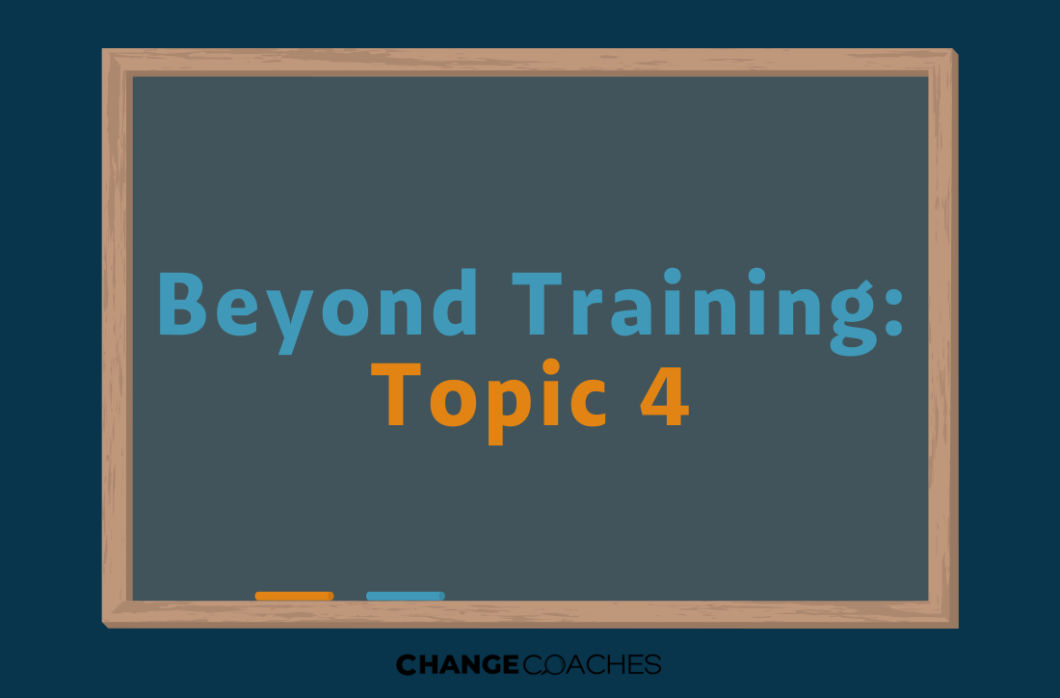We have all experienced a range of emotions over the past couple of weeks. One person that kept me inspired the entire time was Stacey Abrams. I saw Abrams speak a couple of years ago and I still remember her powerful words.
Sometimes you have to keep breaking things before you fix them.
Abrams is a remarkable leader who led a consortium of organizations that registered 800,000+ new voters in Georgia. Most of these new voters were under 30 or people of color, and many were previously suppressed. Abrams exposed a morbidly broken voting system when she lost her highly coveted race for Georgia governor, an experience that ignited her to reach new heights. She soon made a tireless commitment to continue breaking and fixing that same system. Her efforts eventually worked!
Many of my clients tell me that their journey to establish inclusive and equitable cultures are similar. Most lost patience during the breaking process and soon gave up. They didn’t recommit until they were faced with an inexorably high risk. The house couldn’t simply be smoking, it had to be engulfed in flames.
For many organizations, 2020 was the year they were engulfed in those very flames. We experienced an intense reckoning with racial justice, a global pandemic, mothers left with no childcare, anxiety at an all time high, and a divided election all while people are still plagued with a lack of empathy and psychological safety at work.
It’s time to finally turn things around. As you have learned from my earlier Beyond Training posts, every DEI journey starts with your people. People build and foster structures, and a conglomeration of structures comprises a system. Systems influence people, which influence structures.
People, structures, and systems. I call them the trifecta. Here is more about each of those concepts and why they are important:
People
Everything starts with people. People build the structures and systems that we currently adhere to. With no people, there are no structures or systems. A common mishap is to only consider people INSIDE your organization (i.e., management or employees, executive leadership, etc). But it only starts there.
People who are usually not considered in DEI efforts are customers and job candidates. All customers, especially large ones, influence organizational structures and systems. Think of a professional services firm that has one key banner customer and needs to do everything possible to keep it. This particular firm might impact who gets hired, promoted, or even fired. This is why customers are an important part of this equation.
In regards to job candidates, it’s simple. Organizations have to hire people who are aligned to their organization’s values. One bad “values detractor” hire can contaminate your entire culture.
Structures
Structures are often where many organizations start. It’s all too familiar: You hire a Chief Diversity Officer and then develop a few key talent programs to retain black employees. Yes, that’s a start. But while you are at it, be sure to audit your fundamentals, including performance management and compensation.
One more note about structures, similar to people, is to consider structures built around external processes as well. Vendor selection, customer service, charitable giving, and organizational partnerships are also important structures to consider. The opportunity to establish equity is often missed here.
Systems
Systems are the sum of all structures. This category includes fundamental structures such as culture, strategic planning, and visioning. It also includes less obvious structures like industry. For example, does your industry historically lack diversity? Maybe your industry only attracts men? This is why it’s important to revisit these implicit systems.
Pacing yourself on the journey ahead involves understanding and planning your DEI efforts so they align to the trifecta. It doesn’t stop at HR processes, employees or even salary studies and adjustments. It starts and ends with the trifecta.
—-
Thanks for reading my Beyond Training Series. If you found the series useful, please share with a friend.
If you are reading and applying tips provided in my Beyond Training series, I would like to hear about your experiences. You can email me at [email protected].
LaTonya Wilkins, ACC, is an ICF-credentialed empowerment and executive coach, global culture leader, and keynote speaker. LaTonya inspires her clients to think beyond training to create real culture change in organizations. To subscribe to my mailing list that includes blogs and other tips, click here. You can learn more about LaTonya at changecoaches.io.

